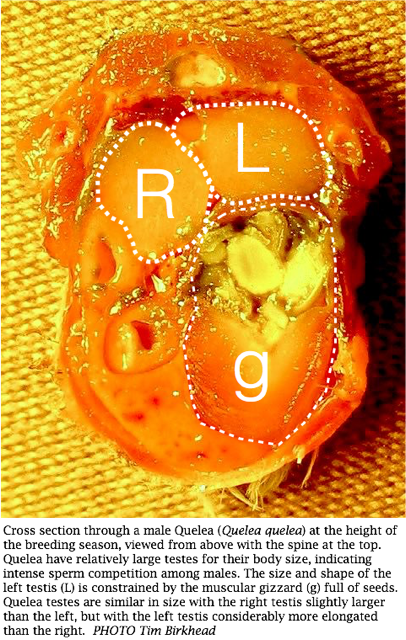Male testes come in all shapes and sizes
Submitted by avianbiology on 24 October 2014.
 Get the paper!
Get the paper! Male testes come in all shapes and sizes. Male mammals usually have two testes that are equal in size but birds, for some unknown reason, usually have one testis bigger than the other, and it is often said that the left testis is larger than the right. At the extremes, one species of cuckoo (Black Coucal) has only a right testis, and one species of duck (Bufflehead) has the left testis four times the size of the right one. We wanted to understand both the cause and the extent of this tremendous variation.

In birds, the gonads are internal and their shape tends to be dictated by the space available in the animal, but size varies in ways that we are only beginning to understand. Certainly bigger animals tend to have bigger testes, but not always, as animals that undergo sperm competition have bigger testes than those that mate monogamously.

It turns out that about 1/4 of the around 250 species that we studied have the right testis larger than the left and testis shape varied from nearly spherical to very elongated. We found that larger combined testes size is achieved by having testes similar in size. However, most of the variation in asymmetry remains a mystery, including why a larger left testis is the more common ancestral and extant pattern. Perhaps testis asymmetry is a correlated response to selection for asymmetry in female gonads (the right ovary is often absent or degenerate), or it could be the result of as yet unstudied physiological efficiencies due to the rapid growth and recrudescence of bird testes during the breeding season, when they can change 1000-fold in size in just a few weeks.
Most important, our paper highlights the fact that we still know very little about much of the reproductive anatomy and physiology of birds, despite more than a century of interest and study.
Read the paper online!
http://www.avianbiology.org/article/testis-asymmetry-birds-influences-se...